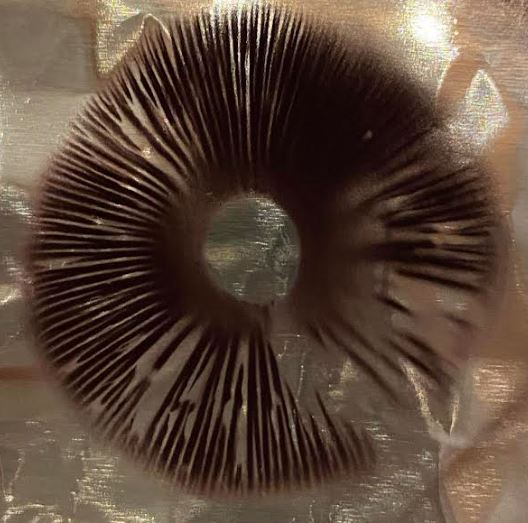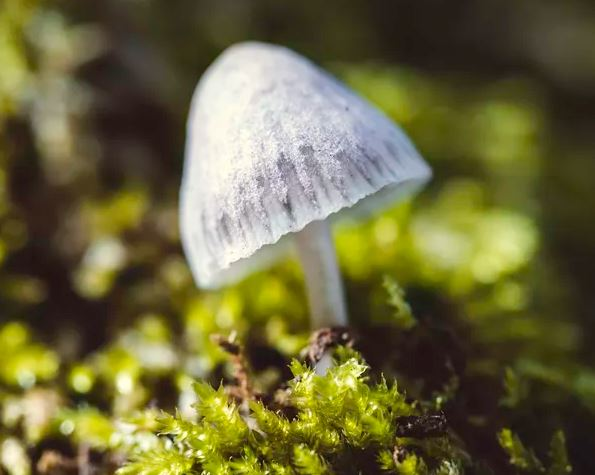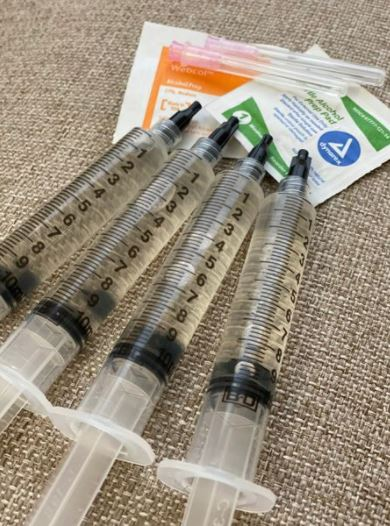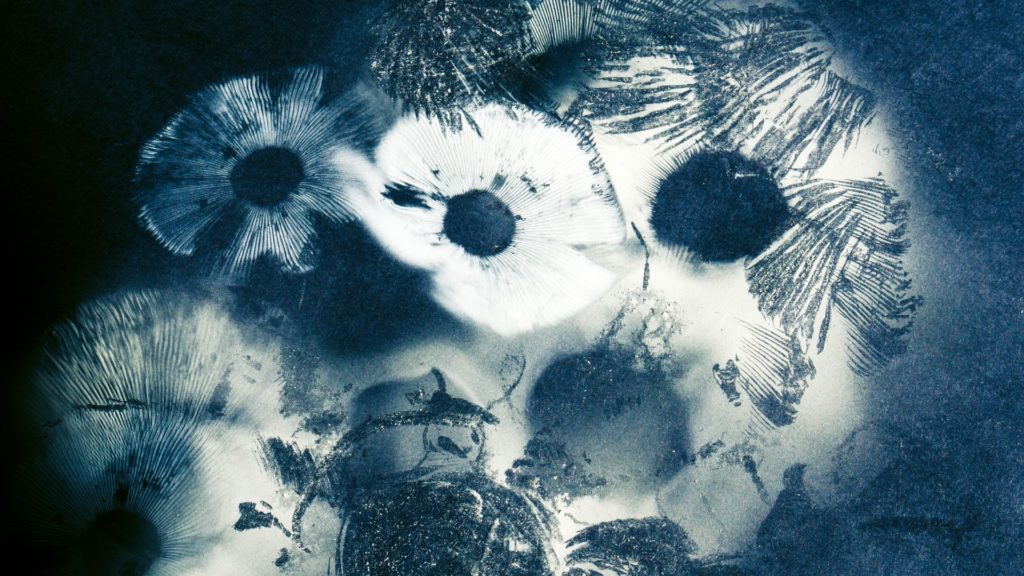We here at Quality Spores always love hearing from myco enthusiasts about different opinions and experiences as well as techniques when it comes to anything related to mycology. We of course only sell mushroom spore syringes for microscopy research only, but we do love to hear of different techniques out there in all things mushrooms. This post is just that. The techniques described below for informational purposes only. Enjoy!
How To Make Mushroom Spore Print
Mushroom cultivation is a fascinating and rewarding hobby, but it can also be quite complex. The key steps in the process are making and storing spore prints and spore syringes. The following article will highlight how to make spore prints and correctly store mushroom spore syringes.

How To Make A Mushroom Spore Print
A spore print is a collection of mushroom spores that cultivators use to propagate the mushroom species from creating a spore syringe. Making a mushroom spores print is a simple process that involves placing a fresh mushroom cap onto a piece of paper or glass sheet, covering it, and allowing the spores to drop onto the paper.
Once the spores have dropped, research scientists and mushroom cultivators use them to prepare a spore syringe or store it for future use in the form of liquid culture syringes or spore syringes.
Here are three simple methods of making spore prints on paper, glass, and spore syringes you may use to make a spore print.
How To Make Spore Prints On Paper
To avoid contamination of the spores, it is best to make spore prints on a clean, dry white sheet of paper. Paper that is not too thick is also suitable for spore printing. In this way, you will receive a good imprint of your mushroom spores that, if preserved correctly, will undoubtedly last longer.
1. You will need a fresh mushroom cap, white paper, and a clean, dry surface to work on.
2. Gently wipe the mushroom cap with a damp cloth to remove debris.
3. Place the mushroom cap, gill side down, onto the paper. Ensure the mushroom cap is centered on the paper and not touching the sides of the paper.
4. Cover the mushroom cap with a glass or plastic container, such as a jar or plastic container. This way, you create a dark and humid environment for the spores to drop.
5. To give the spores sufficient time to drop, leave them overnight, approximately 12-18 hours.
6. Carefully remove the mushroom cap from the paper. You will notice a clear imprint of the spores on the paper.
7. For future reference, the spore prints should be clearly labeled, marking the date and mushroom species.
8. To avoid damage, store the prints in a cool, dark space. Contact with direct sunlight or heat will damage the spores’ viability for future cultivation.
How To Make Spore Prints On Glass Sheet
To avoid contamination, making spore prints on clean, dry glass sheets is best. Glass sheets are better for collecting spores because they adhere better to glass than paper. glass is also a better conduit for spore preservation than paper.
1. You require a fresh mushroom cap, a glass sheet, and a clean, dry surface to work on.
2. Remove debris or dust particles from the mushroom cap by wiping gently with a clean, slightly damp cloth.
3. Place the mushroom head, gill side down, onto the glass sheet. Ensure the cap is centered on the glass sheet.
4. To create a dark, humid environment, place a clean plastic or glass jar or container over the mushroom cap.
5. Allow the spores to drop overnight.
6. The following day, uncover and carefully lift the mushroom cap from the glass sheet. You should notice a clear imprint of the mushroom spores on the glass sheet.
7. Correctly label the spore prints with the date and mushroom species for future reference.
8. Store the spore prints in a cool, dark space away from direct sunlight to avoid damage.

How To Make Spore Syringes
Research scientists and mushroom cultivators can use spore syringes to propagate mushrooms or preserve them for future use. Once the spore syringes are made, cultivators can use it to inoculate spawn or grow mushrooms on a suitable substrate.
If stored in a refrigerator under the correct temperatures, spore syringes are known to last years and remain viable for cultivation.
1. You require a spore print, a sterile spore syringe, distilled water, and a lighter or alcohol lamp.
2. To prevent contamination sterilize the syringe first before use. To sterilize, carefully hold the syringe needle over a flame or alcohol lamp.
3. Inject the water into the syringe, then carefully touch the tip of the sterilized needle to the spore print, and draw the spores into the syringe. Ensure that the spores are evenly distributed throughout the syringe.
4. For future reference, label the syringe correctly with the date and mushroom species and store it in a cool, dark storage space. A refrigerator is an ideal place to store spore syringes. However, ensure the syringes do not freeze.
How To Store Spore Syringes And Spore Prints
Storing mushroom spore syringes as well as liquid culture syringes is critical to ensure they remain viable for future use. Avoid freezing the syringes, as this can damage the spores and/or liquid culture. And ensure they are stored in a cool, dark place like a refrigerator.
Extreme heat or cold temperatures may damage the mushroom spores, and especially liquid culture syringes. Mycelium that is in the liquid culture syringes may be at times more delicate than spores themselves.
When storing mushroom spores, it’s best to keep the spore syringes or liquid culture syringes in a sealed container in a cool, dark place. Avoid exposing the spores or liquid culture to direct sunlight or heat, as this can cause them to lose their viability. It’s also important to note that spores can lose their viability over time so it’s best to use them as soon as possible. It is still our opinion that the best place to store mushroom spore syringes is in a refrigerator.
If you would like to learn more about the differences between spore syringes and liquid culture syringes, checkout our post here.

Reasons For Making Spore Prints
Making mushroom spore prints is an essential step in the process of mushroom cultivation for several reasons:
1. Propagation
Mushroom cultivators use spore prints to create spore syringes. The primary reason for making a spore print is to propagate the mushroom species. The syringes are then used to inoculate spawn or grow mushrooms on suitable substrates.
2. Species Identification
Mushroom cultivators and preservers collect spore prints to identify mushroom species. The various colors of each spore print identify each species. Each mushroom species have different colored spores.
3. Mushroom Preservation
Research scientists use spore prints to preserve the genetic diversity of a mushroom species. The spores are viable for future use with the correct storage and method of collecting spore prints.
4. Mushroom Research
Spore prints collected allow research scientists to study mushroom species, genetics, and characteristics under which they grow, etc. Using a mushroom spore syringe is still the cleanest way to study spores.
Conclusion
Making and storing spore prints and spore syringes is a crucial step to growing mushrooms By following the steps outlined in this article, you can ensure that your spores remain viable for future use. This guide provides valuable information on making spore prints, storing spore syringes, and adequately storing mushroom spores. It’s a must-read for anyone interested in growing mushrooms at home or for studying microscopy from a spore syringe.
This also coincides with necessity of a vast knowledge of how important liquid culture is in mycology. Adding how to make a liquid spore solution as well as a liquid culture solution will improve any amateur mycologist’s understanding of how mycelium thrives, is stored, and produces fruit in the wild.

